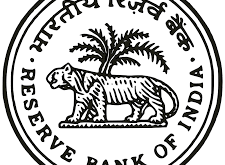People usually have different opinions about debt. Some will recommend it to you whereas others might warn you about possible adverse consequences. In essence, debt can be a double-edged sword. Depending on the amount and type of debt and your income, debt can have favorable or unfavorable consequences. You need to understand the difference between good debt and bad debt and their respective limits. Here are some insights that will help you understand when debt can be good or bad for you.
Debts that help create wealth
Student loan – For folks coming from lower to middle income families, student loan may be the only option to fund their college education. A student loan can be a good investment, as higher education can get you high paying jobs. Student loans are also advantageous, as they are available at relatively lower interest rates.
As a rule of thumb, you should borrow only that much amount that you are expecting to earn in the first year of your job. For example, if your annual income is expected to be $70,000, you should not borrow more than that for your student loan. This will ensure that you are able to easily pay-off the loan during the repayment window, which is usually 10 years.
Mortgage – This is another form of good debt, as interest rate is relatively low. Plus, the value of your home will increase with time. A mortgage can also help you live a better life. However, you should be careful about how much you borrow. As a general rule, your monthly mortgage payment should not exceed 28% of what you earn in a month. The monthly payment includes any private mortgage insurance (PMI). Another benefit of mortgage is that the interest paid may be tax deductible.
Debts that can be dangerous
As a general rule, any debt with high interest rates is a matter to be careful about. You should also consider whether the interest paid is tax deductible or not. Some products that are notorious for putting people into debt include credit cards and certain types of auto loans. Average interest rate on credit card is as high as 17%. It is estimated that close to half of Americans have unpaid credit card bills.
Auto loans can also be worrying, as the value of the car continues to depreciate. Duration of auto loan is another factor that you need to consider. The longer the term, the higher interest you will have to pay.
Safe debt guidelines
As a rule of thumb, you should try to keep overall debt less than 30% of your pre-tax income. Even 31% to 36% is considered okay. If your overall debt is anywhere between 37% and 40%, it means your finances are already stretched. Anything beyond 40% should be considered a red flag warning.
 Newspatrolling.com News cum Content Syndication Portal Online
Newspatrolling.com News cum Content Syndication Portal Online






